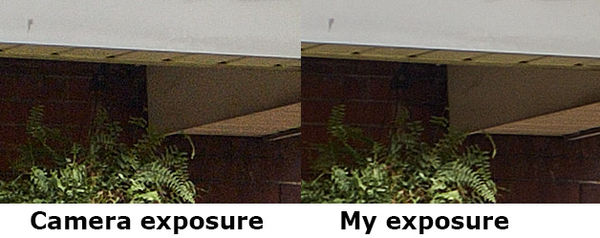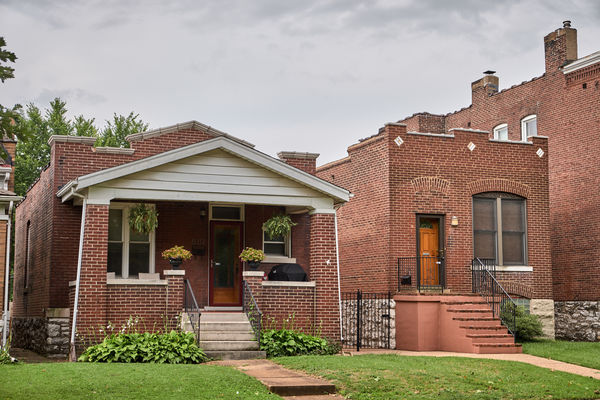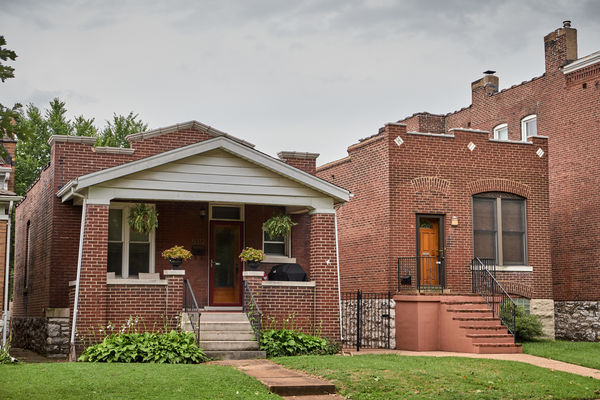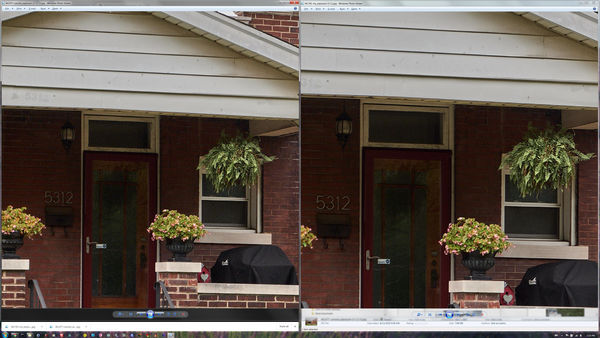Thoughts Around Automated vs. Manual Functions
Aug 10, 2020 14:45:59 #
larryepage wrote:
Before proceeding, I want to declare openly that I... (show quote)
Just the way I do it. I all ways use auto focus. I grew up using manual everything as that was the only way. But because of the very short "throw" of auto focus lenses I find manual focus very difficult. As far as modes are concerned I use them all depending upon the conditions. Even "Gasp" auto.
Aug 10, 2020 17:09:32 #
LWW
Loc: Banana Republic of America
From this thread I’ve learned that:
- Modern meters are nearly perfect.
- Meters very unreliable.
In reality a modern meter will give one of many technically correct exposures.
The art of photography is, in part, recognizing whether or not that presented exposure value is the artistically desired value ... and making adjustments if needed.
That is why I prefer manual shutter and aperture control and letting the ISO be what it needs to be.
Now and then when I want to keep noise low no matter what, I use aperture or shutter priority with ISO 100-400 depending on conditions.
I don’t think I’ve ever used AUTO other to set it for me mum to use.
- Modern meters are nearly perfect.
- Meters very unreliable.
In reality a modern meter will give one of many technically correct exposures.
The art of photography is, in part, recognizing whether or not that presented exposure value is the artistically desired value ... and making adjustments if needed.
That is why I prefer manual shutter and aperture control and letting the ISO be what it needs to be.
Now and then when I want to keep noise low no matter what, I use aperture or shutter priority with ISO 100-400 depending on conditions.
I don’t think I’ve ever used AUTO other to set it for me mum to use.
Aug 10, 2020 17:10:44 #
It's a serious question and should be respected with varied options.
Auto vs manual.
With the advancement it technolgy today it's depressing to see how great the quality is with the cell phone cameras, the balance between light and shaded ares are balanced without having to set your capture and speed to balance everything.
When shooting film we used what was referred to as the 400 125 16 method.
ASA 400 speed 125 at F:16 in average sunlight.
Depending on what the point of focus was you could go up or down with the aperture, lighting adjust likewise, motion blurred or frozen.
If you were photographing a serious subject, we would take three frames, one up one down and the stating point.
It always seemed to work out, putting you in the ball park with little or no tweaking involed.
Here's something to also consider, that is using a different ASA setting, 200 ASA, then F:11 speed 100
Hope this helps.
Not to insult anyones intelligence, but remember when editing digital, always use Tiff, then revert back to jpeg when finished editing your image.
Auto vs manual.
With the advancement it technolgy today it's depressing to see how great the quality is with the cell phone cameras, the balance between light and shaded ares are balanced without having to set your capture and speed to balance everything.
When shooting film we used what was referred to as the 400 125 16 method.
ASA 400 speed 125 at F:16 in average sunlight.
Depending on what the point of focus was you could go up or down with the aperture, lighting adjust likewise, motion blurred or frozen.
If you were photographing a serious subject, we would take three frames, one up one down and the stating point.
It always seemed to work out, putting you in the ball park with little or no tweaking involed.
Here's something to also consider, that is using a different ASA setting, 200 ASA, then F:11 speed 100
Hope this helps.
Not to insult anyones intelligence, but remember when editing digital, always use Tiff, then revert back to jpeg when finished editing your image.
Aug 10, 2020 17:23:59 #
Neescruzer1 wrote:
It's a serious question and should be respected wi... (show quote)
Here 20 years into the 21st century, we real photographers shoot in RAW.
Aug 10, 2020 17:44:38 #
LWW
Loc: Banana Republic of America
CHG_CANON wrote:
Here 20 years into the 21st century, we real photographers shoot in RAW.
Amen brother.
Aug 11, 2020 06:51:28 #
Auto vs Manual boils down to 3 things.
1. Manual is about creativity and mastery of equipment and auto is about "just get a photo!".
2. Many photographer feel that they are not doing a good job if they are using auto and having that judgement, they extend it to others, believing that those who do not use manual and its output which is RAW, are idiots.
3. There are occasions when auto is more appropriate to use than manual. That said, refer to #2
But we must not forget that there are half ways between this two.
Several in fact; Aperture priority, Shutter priority, Program mode, Auto ISO, TTL, Vibration reduction etc. all of which have a niche where they are the best for that time.
1. Manual is about creativity and mastery of equipment and auto is about "just get a photo!".
2. Many photographer feel that they are not doing a good job if they are using auto and having that judgement, they extend it to others, believing that those who do not use manual and its output which is RAW, are idiots.
3. There are occasions when auto is more appropriate to use than manual. That said, refer to #2
But we must not forget that there are half ways between this two.
Several in fact; Aperture priority, Shutter priority, Program mode, Auto ISO, TTL, Vibration reduction etc. all of which have a niche where they are the best for that time.
Aug 11, 2020 07:12:30 #
Wallen wrote:
Auto vs Manual boils down to 3 things. br br 1. M... (show quote)
What you say about users rings broadly true. But what you say about modes and features is gobbldegook ... neither true or false cuz makes no sense.
Aug 11, 2020 09:45:12 #
User ID wrote:
What you say about users rings broadly true. But what you say about modes and features is gobbldegook ... neither true or false cuz makes no sense.
The question is about 2 extremes -(full) manual & auto. I just included that one can be halfway in-between these 2 extremes in one form or another and in various degrees or percentage of automation as cited beforehand.
While most are familiar with Aperture Priority & Shutter priority in which the user only controls one aspect of the exposure triangle, (in Nikon as an example) Auto ISO can be used with Manual mode. Some may say it is still a manual mode, but that auto ISO is an automatic feature that will adapt to the manual settings for exposure. So technically speaking, in the above example, even at Manual mode, there is a percentage of the setting that the camera would take over on. This is a setup that is somewhere in the halfway point of the 2 extremes.
Common ways of thinking focuses only on the exposure triangle. Modern cameras have gone way past that. Take the VR as another example. It is one of those that is an in-between manual and auto. It has a manual control as it can be turned on and off because there are time its better to have them on and there are times its not. At the same time, once it is on, it is working autonomously.
Think of this one; If i have every googily bit and gunkididoos off and the control in manual except white balance. Am i really in full control of the photo?
Aug 11, 2020 10:49:37 #
Wallen wrote:
The question is about 2 extremes -(full) manual & auto. I just included that one can be halfway in-between these 2 extremes in one form or another and in various degrees or percentage of automation as cited beforehand. ...
There is a time and place for either approach and everything in between.
After looking at all of the posts here you might think that full manual is more difficult to use than full auto. But this is not the case. You just need to engage your little gray cells.
The first image below is clearly a snapshot using full Auto (other than the aperture, which is fixed).
The second used full manual. I did not need to worry about exposure because I knew from experience how to set it. I did a little shadow recovery in post processing, otherwise it looks just like the JPEG SOOC.
Both images were equally easy to capture.
Taken with an iPhone 8 from about 18 inches. Exposure and ISO? I don't care.
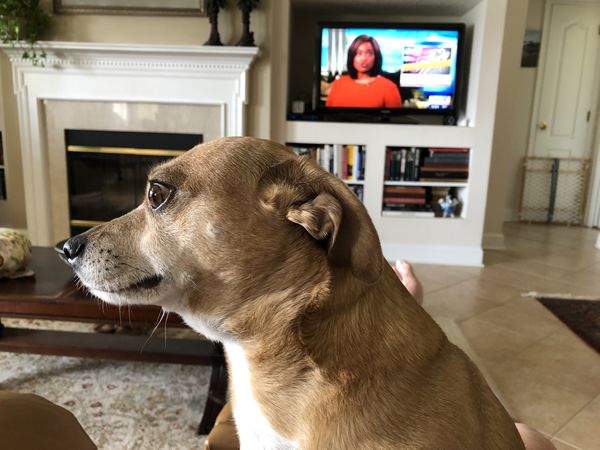
(Download)
Taken around noon with a Fuji X100T. Autofocus, Daylight WB, Settings established before I left home: ISO 200 1/1000 @ f/8 (LV 15)
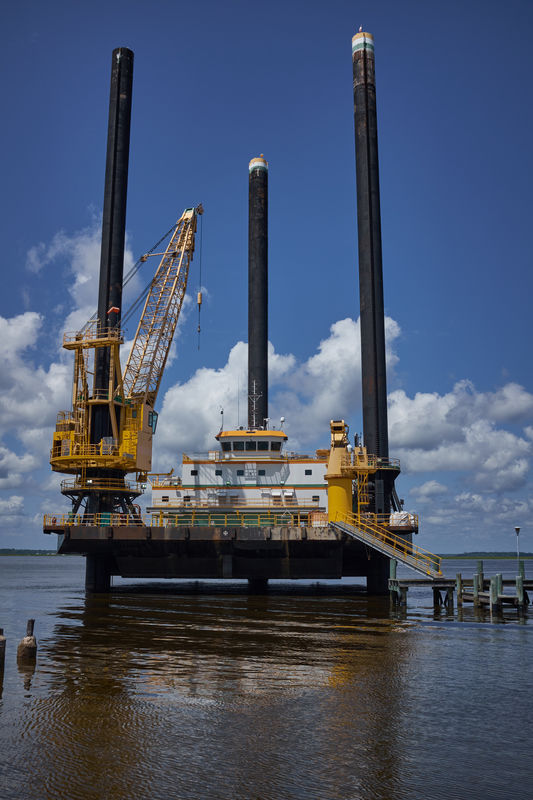
(Download)
Aug 11, 2020 13:10:36 #
Ysarex
Loc: St. Louis
selmslie wrote:
Maybe to your satisfaction but I doubt that you can demonstrate it.
Sorry for the delay I was busy.
I can demonstrate it. Even in very low contrast light where you claim it makes no difference. Today we're overcast and threatening rain -- very low contrast light and reduced scene DR.
Sure, I could noise filter the camera exposure shot and for all practical purposes it wouldn't matter. I don't argue that. But even in this low contrast light you can see the difference that more than twice the exposure makes. The principle at work is a simple fact and the result is visible: more exposure = better SNR.
So I don't need to do it in some cases but no harm is done if I do it in all cases. And as the scene DR increases the difference increases to the point where it does matter. I choose to get the best result possible and apply a consistent practice that helps me do that. I happen to like taking photos with above average scene DR and my practice supports doing that. There's no good reason to settle for less than doing the best we can.
In the 100% comparison below you can see that the shadows in the camera exposure are noisier. It's precisely what we know to expect from less exposure. The two raw files received equal treatment in C1 (noise filtering was turned off for both) the only difference of course was the exposure comp for the camera exposure to match my exposure.
Aug 11, 2020 13:35:59 #
Wallen wrote:
Auto vs Manual boils down to 3 things. br br 1. M... (show quote)
Creativity doesn’t come out from the equipment of the camera rather of artistic photo that you create when you press the shatter button.
Aug 11, 2020 13:38:29 #
LWW
Loc: Banana Republic of America
Ioannis wrote:
Creativity doesn’t come out from the equipment of the camera rather of artistic photo that you create when you press the shatter button.
My camera doesn’t have a shatter button. Sometimes I wish it did.

Aug 11, 2020 13:39:41 #
If you can't find a way to be successful in photography, find an excuse.
Aug 11, 2020 13:53:12 #
LWW
Loc: Banana Republic of America
CHG_CANON wrote:
Action sports and all forms of BIF photography would not exist today without AF.
Really?
I’ll agree it’s easier today, but it was done and done well long before AF.
Aug 11, 2020 15:47:18 #
Ysarex wrote:
Sorry for the delay I was busy.
I can demonstrate it. Even in very low contrast light where you claim it makes no difference. Today we're overcast and threatening rain -- very low contrast light and reduced scene DR. ...
I can demonstrate it. Even in very low contrast light where you claim it makes no difference. Today we're overcast and threatening rain -- very low contrast light and reduced scene DR. ...
As we can see in the attached 100% comparison, both images are noisy. Although the one on the right should theoretically be less noisy than the one on the left, it's virtually impossible to tell.
Look at the darkest portions of the image - the barbecue cover, the mailbox, the transom, the pots, the porch light, etc. I doubt that anyone can see that the additional 1.33 stops of exposure made things visibly better.
Now compare your images to my earlier image in broad daylight of the dredging platform. Look under the platform at the deepest shadows - at 100%. Do you see any noise at all? That image had no overexposed raw pixels but according to RawDigger (next post) there was no room to add exposure.
If you want to reply, then register here. Registration is free and your account is created instantly, so you can post right away.




